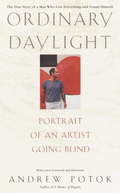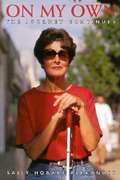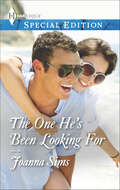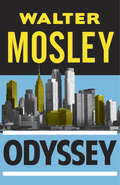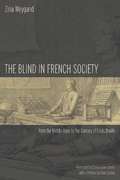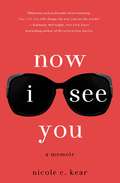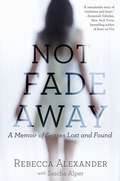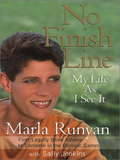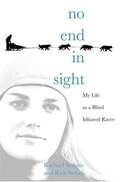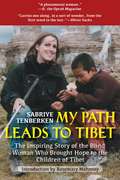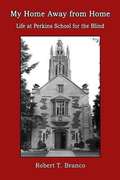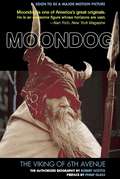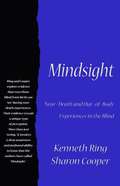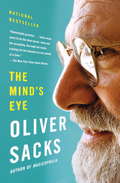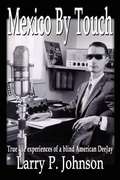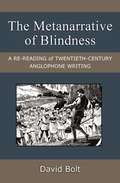Special Collections
Blindness and Visual Impairment Special Collection
Description: A collection featuring biographies, memoirs, fiction and non-fiction by and about members of the blind community. #disability
- Table View
- List View
Ordinary Daylight
by Andrew PotokAndrew Potok is an intense, vigorous, sensual man--and a gifted painter. Then, passing forty, he rapidly begins to go blind from an inherited eye disease, retinitis pigmentosa. Depressed and angry, he rages at the losses that are eradicating his life as an artist, his sources of pleasure, his competence as a man. He hates himself for becoming blind. But as he will ultimately discover, and as this remarkable memoir recounts, it is not the end of the world. It is the beginning.
his the story of Potok's remarkable odyssey out of despair. He attempts to come to terms with his condition: learning skills for the newly blind, dealing with freakish encounters with the medical establishment, going to London for a promised cure through a bizarre and painful "therapy" of bee stings. He wrestles with the anguish of knowing that his daughter has inherited the same disease that is stealing his own eyesight. And then, as he edges ever closer to complete blindness, there comes the day when he recognizes that the exhilaration he once found in the mix of paint and canvas, hand and eye, he has begun to find in words.
By turns fierce, blunt, sexy, and uproariously funny, Andrew Potok's memoir of his journey is as shatteringly frank as it is triumphant.
On My Own
by Sally Hobart AlexanderThe second part of the author's autobiography, of which the first part, Taking Hold, was published in 1994. The author describes the difficulties and accomplishments she experiences as she adjusts to living independently after losing her sight.
One of the Lucky Ones
by Lucy Ching
Many people might think me unlucky because I am blind, writes Lucy Ching in this poignant autobiography, but I prefer to think of myself as one of the lucky ones.
Indeed, Lucy Ching's achievements despite total blindness would be outstanding in any time and place- especially so in China of the 1930s, where the blind were treated as outcasts and blind children were sometimes sold into slavery by their own families. Lucy Ching was fortunate enough to be kept at home with her parents, but as she reveals in this remarkable memoir, her triumph over her disability was due to her own fierce determination... and to a very special friendship. Under the devoted care of her amah, an illiterate servant woman who was guided only by common sense, intuition and affection for the child, Lucy Ching learned to live in a sighted world, vowing to have the independence and fulfillment of a profession.
As a child, Lucy taught herself to read and write in braille and was allowed to attend school with sighted children. And, quite against the beliefs of her family, she converted to Christianity and made a solemn promise to God that her lifework would be to help the blind. Lucy's unflagging dedication was rewarded with a scholarship to the Perkins School for the Blind in Boston, where she received the special training which has enabled her to carry out her promise.
My life could have been spent in enforced idleness and isolation, observes Lucy Ching, cut off from other people and their lives and problems. But I was luckier than that. God had other plans for me.
Like Helen Keller, she found herself, her work and her God through affliction. Today Lucy Ching is a social worker in Hong Kong, where she works with the blind as well as other handicapped people.
The One He's Been Looking For
by Joanna SimsHe'd finally discovered his muse just as he was losing his sight. Joanna Sims tells the romantic story of a closed-off photographer who opens up for the love he's always needed in her latest book, The One He's Been Looking For! World-famous photographer Ian Sterling had been searching for the perfect woman. And when he finally spotted Jordan Brand he simply had to have her. Her photos would mark his final work. His life as he knew it was slipping through his fingers. The man who bestowed beauty on the world was losing his sight. For rebellious artist Jordan, becoming someone's inspiration should have been laughable. Yet being with Ian made her ridiculously happy. Knowing of the difficult road he was traveling made her love him even more. But Ian refused to pass his disorder along to childrenleaving Jordan to choose between the man who held her heart and the family she'd always wanted .
Old Dogs and New Tricks
by Kenneth JerniganThe tenth book in the Kernel Book Series contains these vignettes: Editor's Introduction Old Dogs and New Tricks The Sliding Board Tending to My Knitting Roller Coasters Serving Communion and Loving Elizabeth. Other books in this series are available from Bookshare.
Odyssey
by Walter MosleyIn this gripping and provocative eBook original novel celebrated bestselling author Walter Mosley explores the mind of an African-American man who is forced to re-examine his most closely held beliefs about race and about himself. Sovereign James wakes up one morning to discover that he's gone blind.Sovereign's doctors can't find anything wrong with him, nor does he remember any physical or psychological trauma. Unless his sight returns, Sovereign has reached the end of his 25-year career in human resources. A couple of weeks later he is violently mugged on the street. His sight briefly, miraculously returns during the attack: for a few seconds, he can see as well as hear a young female bystander's cries of distress. Now he must grapple with two questions: What caused him to lose his vision--and, perhaps more troubling, why does violence restore it? As Sovereign searches for the woman he glimpsed, he will come to question everything he valued about his former life.
Now We Are Citizens
by Emily-Jane Cohen and Zina WeygandThe integration of the blind into society has always meant taking on prejudices and inaccurate representations.
Weygand's highly accessible anthropological and cultural history introduces us to both real and imaginary figures from the past, uncovering French attitudes towards the blind from the Middle Ages through the first half of the nineteenth century. Much of the book, however, centers on the eighteenth century, the enlightened age of Diderot's emblematic blind man and of the Institute for Blind Youth in Paris, founded by Valentin Haüy, the great benefactor of blind people.
Weygand paints a moving picture of the blind admitted to the institutions created for them and of the conditions under which they lived, from the officially-sanctioned beggars of the medieval Quinze-Vingts to the cloth makers of the Institute for Blind Workers. She has also uncovered their fictional counterparts in an impressive array of poems, plays, and novels. The book concludes with Braille, whose invention of writing with raised dots gave blind people around the world definitive access to silent reading and to written communication.
Now I See You
by Nicole C. KearAt nineteen years old, Nicole C. Kear's biggest concern is choosing a major--until she walks into a doctor's office in midtown Manhattan and gets a life-changing diagnosis. She is going blind, courtesy of an eye disease called retinitis pigmentosa, and has only a decade or so before Lights Out. Instead of making preparations as the doctor suggests, Kear decides to carpe diem and make the most of the vision she has left. She joins circus school, tears through boyfriends, travels the world, and through all these hi-jinks, she keeps her vision loss a secret.
When Kear becomes a mother, just a few years shy of her vision's expiration date, she amends her carpe diem strategy, giving up recklessness in order to relish every moment with her kids. Her secret, though, is harder to surrender - and as her vision deteriorates, harder to keep hidden. As her world grows blurred, one thing becomes clear: no matter how hard she fights, she won't win the battle against blindness. But if she comes clean with her secret, and comes to terms with the loss, she can still win her happy ending.
Told with humor and irreverence, Now I See You is an uplifting story about refusing to cower at life's curve balls, about the power of love to triumph over fear. But, at its core, it's a story about acceptance: facing the truths that just won't go away, and facing yourself, broken parts and all.
Not Fade Away
by Rebecca Alexander and Sascha AlperEven a darkening world can be brilliantly lit from within.
Born with a rare genetic mutation called Usher Syndrome type III, Rebecca Alexander has been simultaneously losing both her sight and hearing since she was a child, and was told that she would likely be completely blind and deaf by age 30. Then, at 18, a fall from a window left her athletic body completely shattered.
None of us know what we would do in the face of such devastation. What Rebecca did was rise to every challenge she faced. She was losing her vision and hearing and her body was broken, but she refused to lose her drive, her zest for life and - maybe most importantly - her sense of humor. Now, at 35, with only a sliver of sight and significantly deteriorated hearing, she is a psychotherapist with two masters' degrees from Columbia University, and an athlete who teaches spin classes and regularly competes in extreme endurance races. She greets every day as if it were a gift, with boundless energy, innate curiosity, and a strength of spirit that have led her to places we can't imagine.
In Not Fade Away, Rebecca tells her extraordinary story, by turns harrowing, funny and inspiring. She meditates on what she's lost--from the sound of a whisper to seeing a sky full of stars, and what she's found in return--an exquisite sense of intimacy with those she is closest to, a love of silence, a profound gratitude for everything she still has, and a joy in simple pleasures that most of us forget to notice.
Not Fade Away is both a memoir of the senses and a unique look at the obstacles we all face--physical, psychological, and philosophical--exploring the extraordinary powers of memory, love, and perseverance. It is a gripping story, an offering of hope and motivation, and an exquisite reminder to live each day to its fullest.
No Sight - Great Vision
by J. W. WilsonThis text provides a history of the Association for the Blind in Australia.
No Limits
by Harry C. Cordellos and Janet WellsImagine a blind person water-skiing, golfing, running a marathon, and even diving. Harry Cordello did not let his blindness limit his activity. Instead he asked himself "Why not"?
No Finish Line
by Sally Jenkins and Marla Runyan"Blind? I think there's no doubt that Marla Runyan can see things much clearer than most of us with 20/20 vision. " - Lance Armstrong
Marla Runyan was nine years old when she was diagnosed with Stargardt's disease, an irreversible form of macular degeneration. With the uneasy but unwavering support of her parents, she refused to let her diagnosis limit her dreams. Despite her severely impaired, ever-worsening vision, Marla rode horseback and learned to play the violin. And she found her true calling in sports. A gifted and natural athlete, Marla began to compete in the unlikeliest event of all: the heptathlon, the grueling women's equivalent of the decathlon, consisting of seven events: the 200-meter dash, high jump, shot put, 100-meter hurdles, long jump, javelin throw, and 800-meter run. In 1996, she astonished the sports world by qualifying for the U. S. Olympic Trials and, along the way, set the American record for heptathlon 800. It was then that she decided to concentrate on her running. Four years of intense effort paid off. In 2000, she qualified for the U. S. Olympic team by finishing third in the 1,500 meters. In Sydney, she placed eighth in the finals, the top American finisher - the highest women's placing for the United States in the event's history. With self-deprecation and surprising wit, Marla reveals what it's like to see the world through her eyes, how it feels to grow up "disabled" in a society where expectations are often based on perceived abilities, and what it means to compete at the world-class level despite the fact that - quite literally, for her - there is no finish line.
No End In Sight
by Rachael Scdoris and Rick SteberRachael Scdoris, the daughter of a sled musher, has a passion for sled dogs and racing. From a young age she dreams of racing the Iditarod. Afflicted with a rare eye disorder, she is legally blind but is determined to overcome obstacles to make her dream come true. The book tells of her childhood, her experiences at school, and her struggle to become independent. Her love of dogs and dogsledding are paramount throughout her young life.
No Barriers
by Erik Weihenmayer and Buddy Levy“More than an incredible adventure story . . . a beautiful book about family and finding a way to achieve more than you ever thought possible.” —Brad Meltzer, #1 New York Times–bestselling author of The Lightning RodFinalist, Colorado Book AwardHonorable Mention, National Outdoor Book AwardsErik Weihenmayer is the first and only blind person to summit Mount Everest, the highest point on Earth. Descending carefully, he and his team picked their way across deep crevasses and through the deadly Khumbu Icefall; when the mountain was finally behind him, Erik knew he was going to live. His expedition leader slapped him on the back and said something that would affect the course of Erik’s life: “Don’t make Everest the greatest thing you ever do.”No Barriers is Erik’s response to that challenge. It is the moving story of his journey since descending Mount Everest—from leading expeditions around the world with blind Tibetan teenagers to helping injured soldiers climb their way home from war, from adopting a son from Nepal to facing the most terrifying reach of his life: to solo kayak the thunderous whitewater of the Grand Canyon.Along the course of Erik’s journey, he meets other trailblazers—adventurers, scientists, artists, and activists—who, despite trauma, hardship, and loss, have broken through barriers of their own. These pioneers show Erik surprising ways forward that surpass logic and defy traditional thinking.Like the rapids of the Grand Canyon, created by inexorable forces far beneath the surface, No Barriers is a dive into the heart and mind at the core of the turbulent human experience. It is an exploration of the light that burns in all of us, the obstacles that threaten to extinguish that light, and the treacherous ascent towards growth and rebirth.“A tale of grit, determination, courage, and overcoming tremendous odds. . . . A wonderful tribute to the greatness of the human spirit.” —Kirkus Reviews (starred review)
Never Be Discouraged
by Alice CrespoAlice Crespo was born in New York City, raised in Brooklyn, and grew up totally blind. She had to learn many things, and she realized that, with God's help, there was nothing that she couldn't do. The sky was the limit. Alice is now sixty years of age, and she wants to share her experiences and her life lessons with you. Here is her story. Contains image descriptions.
Nectar
by Lily PriorRamona Drottoveo, an albino, is a chambermaid at a lush Italian estate. Distinguished by the intoxicating scent she exudes, Ramona is despised by all women and adored by all men, whose inexhaustible lust she eagerly satisfies. Life changes when her husband dies after discovering his bride with another man on their wedding night. Blamed for his death, Ramona and her lover are exiled to the neighboring city of Naples. There, Ramona's life is transformed once again by the birth of a daughter, Blandina, who "steals" her mother's scent. No longer able to seduce men into blind submission, Ramona humbly returns to the estate to an unexpected welcome -- and revenge. A hilarious and naughty celebration of the senses and the strange places they can lead us, Nectar explores the mystery of sexual attraction and the frivolous nature of divine justice.
My Path Leads to Tibet
by Sabriye Tenberken and Rosemary MahoneyWhile studying Chinese and Asian civilizations in college, Sabriye Tenberken was stunned to learn that in Tibet blind children were living in appalling conditions--shunned by society, abandoned, and left to their own devices. Sabriye, who had lost her sight at the age of twelve as the result of a retinal disease, promised herself early on that she would never allow her blindness to turn her into an invalid. When she heard of a place where sightlessness was practically akin to leprosy, the decision was instant: she would go to Tibet to help these children.
Armed with nothing but her conviction and determination, she single-handedly devised a Tibetan Braille alphabet and opened the first school for the blind in Tibet, with only a handful of students. From its modest beginnings, that school has grown into a full-fledged institution for visually impaired people of all ages. In this updated edition of My Path Leads to Tibet, Sabriye, shares the inspiring story of how she shone an unlikely light in a dark place.
My Home Away from Home
by Robert T. BrancoFrom the ages of 12 to 19, the author attended a school for the blind. He tells about life in the "cottages," academics, sports, field trips, vocational training, and more. He had good and bad teachers, followed wise rules and absurd ones, met good friends and bullies, and welcomed administrative changes. Perkins educated him very well; this book will surely educate and entertain many others.
My Eyes Have A Cold Nose
by Hector ChevignyThe author says that when he became blind, he thought it would be a great nuissance, and indeed it was. He maintains that the greatest problem for blind people is society's fixed notions that blind people are utterly helpless and utterly tragic, and he describes how he and other blind people have dealt with this problem. One of the key parts of his rehabilitation was his training at The Seeing Eye. This book is old, but still relevant in many ways.
A Most Noble Benefaction
by C. Michael MellorFrom the letter in 1908 that started it all, this book tells the story of the Matilda Ziegler Magazine for the Blind, how it changed history, and has helped change many lives for the better.
Moondog
by Robert Scotto and Philip GlassThe basis of a full-length documentary."Moondog is one of America's great originals."-Alan Rich, New York Magazine
Here is a revised edition of a book that celebrates one of the most improbable lives of the twentieth century: a blind and homeless man who became the most famous eccentric in New York and who, with enormous diligence, rose to prominence both in major label pop music recordings in addition to symphonic concerts of his compositions.
This edition of Moondog will soon be seen a as a feature documentary titled The Viking of 6th Avenue directed by Holly Elson and produced by Hard Working Movies.Born Louis Thomas Hardin in 1916, Moondog first made an impression in the late 1940s when he became a mascot of The New York Philharmonic at Carnegie Hall. His unique, melodic compositions were released on the Prestige jazz label. In the late 1960s the Viking-garbed Moondog was a pop music sensation on Columbia Records.
Moondog's compositional style influenced his former roommate Philip Glass, whose preface appears in the book. Moondog's work transcends labels and redefines the distinction between popular and high culture.
A wide-ranging compilation of Moondog recordings, which includes four Madrigals played by Philip Glass, Steven Reich, Jon Gibson, and Moondog himself, are offered as free downloads for every purchaser of this biography.
Mindsight
by Kenneth Ring and Sharon CooperRing and Cooper explore evidence that even those blind from birth can "see" during near-death experiences. Their evidence reveals a unique type of perception. More than just "seeing", it involves a deep awareness and profound ability to know that the authors have called "Mindsight".
This volume is a ground-breaking work in the field of near-death studies. It investigates the astonishing claim that blind persons, including those blind from birth, can actually "see" during near-death or out-of-body episodes. The authors present their findings in scrupulous detail, investigating case histories of blind persons who have actually reported visual experiences under these conditions.
The Mind's Eye
by Oliver SacksIn The Mind's Eye, Oliver Sacks tells the stories of people who are able to navigate the world and communicate with others despite losing what many of us consider indispensable senses and abilities: the power of speech, the capacity to recognize faces, the sense of three-dimensional space, the ability to read, the sense of sight. For all of these people, the challenge is to adapt to a radically new way of being in the world. There is Lilian, a concert pianist who becomes unable to read music and is eventually unable even to recognize everyday objects, and Sue, a neurobiologist who has never seen in three dimensions, until she suddenly acquires stereoscopic vision in her fifties. There is Pat, who reinvents herself as a loving grandmother and active member of her community, despite the fact that she has aphasia and cannot utter a sentence, and Howard, a prolific novelist who must find a way to continue his life as a writer even after a stroke destroys his ability to read. And there is Dr. Sacks himself, who tells the story of his own eye cancer and the bizarre and disconcerting effects of losing vision to one side. Sacks explores some very strange paradoxes-- people who can see perfectly well but cannot recognize their own children, and blind people who become hyper-visual or who navigate by tongue vision. He also considers more fundamental questions: How do we see? How do we think? How important is internal imagery or vision, for that matter? Why is it that, although writing is only five thousand years old, humans have a universal, seemingly innate, potential for reading? The Mind's Eye is a testament to the complexity of vision and the brain and to the power of creativity and adaptation. And it provides a whole new perspective on the power of language and communication, as we try to imagine what it is to see with another person's eyes, or another person's mind.
Mexico by Touch
by Larry P. JohnsonMy memories of Mexico are a montage of flavors, fragrances, sounds and sensations.
There's nothing that can compare with the smell and taste of freshly made corn tortillas just before the mid-day meal. Nor are there many sounds more soothing and ethereal than the rippling melodies of a neighborhood marimba band playing a dawn serenade.
The Metanarrative Of Blindness
by David BoltAlthough the theme of blindness occurs frequently in literature, literary criticism has rarely engaged the experiential knowledge of people with visual impairments. The Metanarrative of Blindness counters this trend by bringing to readings of twentieth-century works in English a perspective appreciative of impairment and disability. Author David Bolt examines representations of blindness in more than forty literary works, including writing by Kipling, Joyce, Synge, Orwell, H. G. Wells, Susan Sontag, and Stephen King, shedding light on the deficiencies of these representations and sometimes revealing an uncomfortable resonance with the Anglo-American science of eugenics.
What connects these seemingly disparate works is what Bolt calls “the metanarrative of blindness,” a narrative steeped in mythology and with deep roots in Western culture. Bolt examines literary representations of blindness using the analytical tools of disability studies in both the humanities and social sciences. His readings are also broadly appreciative of personal, social, and cultural aspects of disability, with the aim of bringing literary scholars to the growing discipline of disability studies, and vice versa. This interdisciplinary monograph is relevant to people working in literary studies, disability studies, psychology, sociology, applied linguistics, life writing, and cultural studies, as well as those with a general interest in education and representations of blindness.
